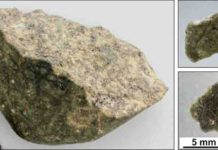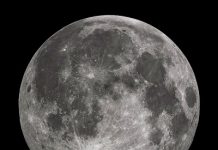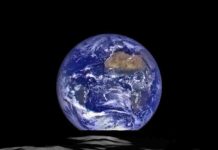
With an estimated 1.6 billion tonnes of water ice at its poles and an abundance of rare-earth elements hidden below its surface, the Moon is rich ground for mining.
In this month’s issue of Physics World, science writer Richard Corfield explains how private firms and space agencies are dreaming of tapping into these lucrative resources and turning the Moon’s grey, barren landscape into a money-making conveyer belt.
Since NASA disbanded its manned Apollo missions to the Moon over 40 years ago, unmanned spaceflight has made giant strides and has identified a bountiful supply of water ice at the north and south poles of the Moon.
“It is this, more than anything else,” Cornfield writes, “that has kindled interest in mining the Moon, for where there is ice, there is fuel.”
Texas-based Shackleton Energy Company (SEC) plans to mine the vast reserves of water ice and convert it into rocket propellant in the form of hydrogen and oxygen, which would then be sold to space partners in low Earth orbit.
As the company’s chief executive officer, Dale Tietz, explains, the plan is to build a “gas station in space” in which rocket propellant will be sold at prices significantly lower than the cost of sending fuel from Earth.
SEC plans to extract the water ice by sending humans and robots to mine the lunar poles, and then use some of the converted products to power mining hoppers, lunar rovers and life support for its own activities.
Moon Express, another privately funded lunar-resources company, is also interested in using water ice as fuel — but in a different form. It plans to fuel its operations and spacecraft using “high-test peroxide” (HTP), which has a long and illustrious history as a propellant.
As for mining the rare-earth elements on the Moon, China is making the most noticeable headway. The Jade Rabbit lander successfully touched down on the Moon in December 2013 and the Chinese space agency has publicly suggested establishing a “base on the Moon as we did in the South Pole and the North Pole.”
With a near-monopoly on the dwindling terrestrial rare-earth elements, which are vital for everything from mobile phones to computers and car batteries, it is no surprise that China may want to cast its net wider.
“All interested parties agree that the Moon — one step from Earth — is the essential first toehold for humankind’s diaspora to the stars,” Corfield concludes.
Note: The above story is based on materials provided by Institute of Physics.










